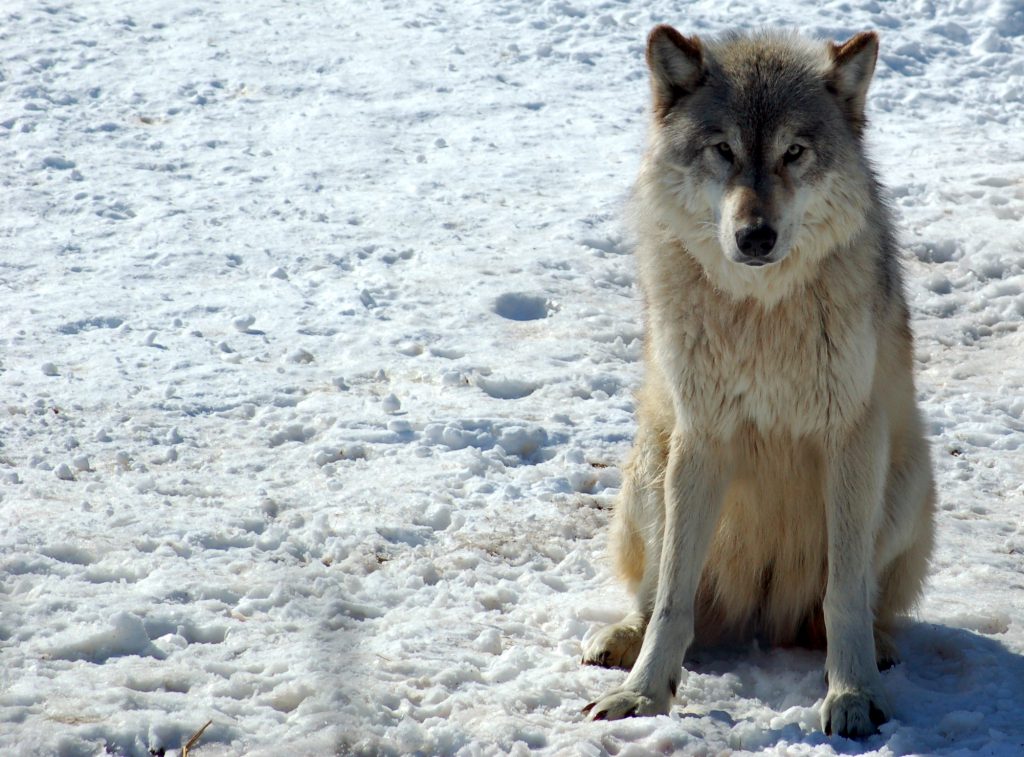200 Wolves Can Be Hunted
State Natural Resources Board relents, sets 200-kill quota and one-week hunting season.

Gray wolf. Photo by Derek Bakken / (CC BY)
The Wisconsin Natural Resources Board discussed an upcoming hunting season for Wisconsin’s gray wolves at a special meeting on Feb. 15. The body debated several aspects of the season, which will run Feb. 22-28, setting a quota of 200 wolves. Beginning in March, potential hunters will be able to begin applying for the next wolf hunt season planned for November.
Gray wolves (Canus Lupus) were listed as a federally protected endangered species until recently. The iconic creatures were removed from the list during the final days of the Trump administration. Now, various states are already preparing for wolf hunts, as populations in Wisconsin and elsewhere are beginning to make a comeback.
Keith Warnke, Fish and Wildlife Parks Division Administrator for the Wisconsin Department of Natural Resources (DNR), detailed the stated reasons for the wolf hunts at the meeting. “We determined the harvest objective was to hold the population stable using the best available information, biological and social,” said Warnke.
In Wisconsin, the recommended quota for this year is 200 wolves, which need to be hunted on non-reservation lands. Standing treaty rights with many tribes, including the Ojibwe Nation, bar hunting on sovereign Native American lands.
At the meeting, some members of the Natural Resources Board questioned why the DNR set the quota at 200 wolves. They questioned whether killing off some 16% of the population is actually going to stabilize it. DNR staff responded that the quota is based on studies on the effect of human-caused mortality on wolf populations, as well as numbers from the previous hunting seasons in Wisconsin.
“The final number of permits available to state hunters will be determined following adjustment of the quota based on tribal declaration,” said Warnke. “Before any licenses are issued, the department will take steps to honor the tribes’ right to declare up to half of the harvestable surplus in the Ceded territory, in accordance to the tribe’s treaty rights and court rulings.” Warnke noted that, “given the time frame, public and tribal input was very limited, and the wolf advisory committee was unable to meet.”
From Feb. 16-20, hunters will be able to apply for permits in the form of a drawing. Winners of the drawing will be able to begin hunting once they printed their tags and purchased their license. The application permit fee is $10 plus $49 for a wolf license. However, non-residents will have to pay $251 for a license. Six hunting zones have been established across the state.
In a Facebook post, the Wisconsin Wolf Conservation Center blasted the hunting season. “The price for killing a wolf?” Asked the post, “Just $45.” It continued, “Wisconsin’s actions offer a tragic glimpse of a future without federal wolf protections — state-sanctioned trophy hunts and managing wolves for the bare minimum.”
Reprinted with permission of Wisconsin Examiner.





















